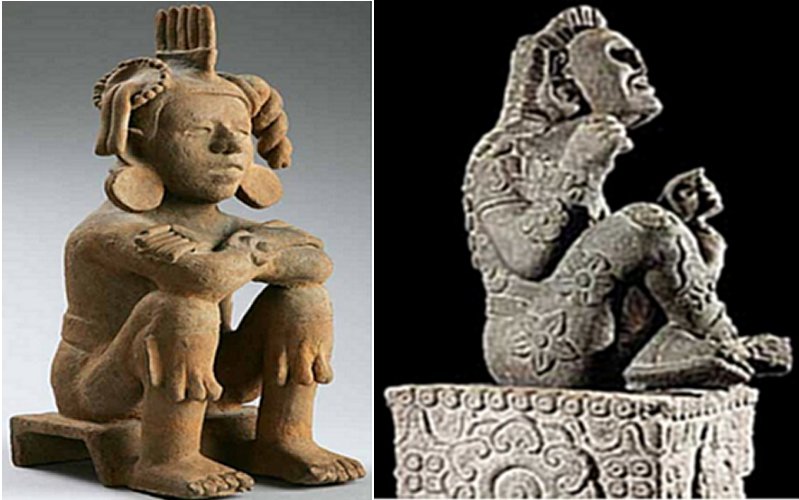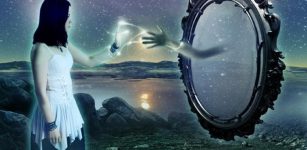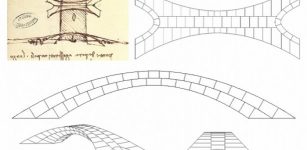Xochipilli: Aztec God Of Love, Music, Song And Ecstatic Mushroom Trance
A. Sutherland - AncientPages.com - Among the main sculptures that have come to us from the ancient Nahuatl culture is Xochipilli, the 'Lord of Flowers'.
Scholars believe that the figure of this deity was carved about one generation before the arrival of Spaniards.

Xochipilli - Aztec God of Flowers, Dance, Song, Love – statue from Art. Museo Nacional de Antropologia,Mexico City.
Xochipilli’s name contains the Nahuatl words xochitl ("flower") and pilli (either "prince" or "child"), and therefore means "flower prince". He is also referred to as Macuilxochitl, which means "five flowers".
Discovery of a remarkable statue
In the mid-1800s, an impressive statue of Xochipilli, carved in stone, was unearthed on the western slopes of the volcanoes Popocatepetl and Iztaccihuatl near Tlalmanalco, south-eastern Mexico. The statue is now housed in the Museum of Anthropology and History of Mexico City.
The statue of Xochipilli is 79 cm high and carved in stone. It represents an extraordinary work of art and depicts Xochipilli, the “god of flowers” who is related to a number of pleasurable activities such as dance, song, music, love, feasting, painting, writing, and song.
The deity is sitting on a temple-like granite base, about 43 cm high and 60 cm per side. His body – in an ecstatic visionary trance - is adorned with sacred flowers (psychotropic plants) and other garments that richly decorate a beautifully carved, basalt temple platform.

Left: Xochipilli, Aztec terracotta, Lombards Museum; Right: Xochipilli covered with “flowers”. Museo Nacional de Antropologia Mexico
It is widely known that the Aztecs possessed advanced knowledge of hallucinogenic plants, which are known to have been used in sacred rituals of this culture.
Sacred mushrooms and flower plants but not quite ordinary ones
In his book “The Wondrous Mushroom - Mycolatry in Mesoamerica”, Robert Gordon Wasson (1898 –1986), an American author and ethnomycologist, describes Xochipilli, the deity of ecstatic mushroom trance. The deity is totally absorbed in temicxoch, 'the flowery dream' state that follows the ingestion of hallucinogenic plants.
He "wears a mask with hollowed-out eyes, his face lifted upward with a fixed gaze. This is a depiction of a man in ecstatic trance. His feet are crossed, toes curled, hands held lightly above the knees at the level of the heart. All around the base of the figurine as well as on his body are images of various flowers, including the hallucinogenic morning glory (ololiuhqui), and mushrooms in profile…"
The “flowers”, however, are not the ordinary ones but rather botanically unspecified plants, frequently mentioned in Nahuatl poetry and as Wasson explains for the Nahua poets and singers, "flowers" and "flowering" or "dream flowers" referred to the visionary experience induced by teonanacátl mushrooms.
Wasson, with the advice of Richard Evans Schultes, director of the Harvard botanical museum, identified the “flowers” that Xochipilli has on his body. Surprisingly, they are not any ordinary plants but species that contain psychoactive substances; they are so-called “dream flowers” or Temicxoch. The divine Xochipilli, writes Gordon Wasson, is absorbed in Temicxoch; he is in ecstasy.
"The flowers took them to another world . . . a world that they called their Tlalocan, a world of strange and wondrous beauty, where they reveled in sensations beyond imagining," writes Wasson.
As we mentioned earlier, Xochipilli symbolizes song and dance, games, love and flowers, maize and beauty. He was also highly respected as the protector of mushrooms, especially earlier mentioned “teonanacátl mushrooms”. This unusual Psilocybin sponge only grows in a small region of Mexico at 3300 - 3700 meters above sea level on the volcano Popocatepetl (where the statue of Xochipilli was found).
As one of the fertility gods, he was a deity linked with agriculture and the cultivation of staple crops such as maize. Many archeologists believe he was first worshipped during the years of the Teotihuacan civilization but was later adopted by the Aztecs.
This kind of mushroom is also known as the “sacred mushroom of visions” and its name teonanacátl means "divine flesh" (or "divine flesh"). It certainly gives us an idea of how important and respected this mushroom was by the Aztecs.
Xochipilli was particularly worshiped at Xochimilco, built in the 16th century by the Spanish on the ruins of Tenochtitlan, the old Aztec capital, Mexico City. The most common offering to this god was pulque, the alcoholic beverage, and corn.
Written by – A. Sutherland AncientPages.com Staff Writer
Copyright © AncientPages.com All rights reserved. This material may not be published, broadcast, rewritten or redistributed in whole or part without the express written permission of AncientPages.com
Expand for referencesMore From Ancient Pages
-
 Nerva: ‘Pater Patriae’ – Aging Roman Emperor Who Succeeded In Time Of Crisis
Featured Stories | Jan 3, 2020
Nerva: ‘Pater Patriae’ – Aging Roman Emperor Who Succeeded In Time Of Crisis
Featured Stories | Jan 3, 2020 -
 Unique 3,300-Year-Old Hittite Bracelet With Symbols Discovered By Farmer
Archaeology | Mar 28, 2022
Unique 3,300-Year-Old Hittite Bracelet With Symbols Discovered By Farmer
Archaeology | Mar 28, 2022 -
 Lady Justice (Justitia): Legal And Philosophical Concept Produced In Remote Antiquity
Featured Stories | Nov 7, 2019
Lady Justice (Justitia): Legal And Philosophical Concept Produced In Remote Antiquity
Featured Stories | Nov 7, 2019 -
 Dian Cécht – Celtic Healer Who Cured Many But Killed His Own Son Of Professional Envy
Celtic Mythology | Sep 19, 2020
Dian Cécht – Celtic Healer Who Cured Many But Killed His Own Son Of Professional Envy
Celtic Mythology | Sep 19, 2020 -
 Mystery Of Doppelgangers And Spirit Doubles – From Ancient To Modern Times
Featured Stories | Sep 16, 2014
Mystery Of Doppelgangers And Spirit Doubles – From Ancient To Modern Times
Featured Stories | Sep 16, 2014 -
 Secrets Of Benjamin Franklin’s Paper Money Deciphered By Scientists
Archaeology | Jul 18, 2023
Secrets Of Benjamin Franklin’s Paper Money Deciphered By Scientists
Archaeology | Jul 18, 2023 -
 What Caused The Unexplained Change In Europeans’ DNA 4000-5000 Years Ago? Scientists Say The Genetic Turnover Remains A Mystery
Archaeology | Aug 27, 2014
What Caused The Unexplained Change In Europeans’ DNA 4000-5000 Years Ago? Scientists Say The Genetic Turnover Remains A Mystery
Archaeology | Aug 27, 2014 -
 Change Of Burial Tradition Among The People of Early Medieval Europe
Archaeology | Aug 6, 2021
Change Of Burial Tradition Among The People of Early Medieval Europe
Archaeology | Aug 6, 2021 -
 Leonardo da Vinci’s 280-Meter Long Bridge Design – Tested
Archaeology | Oct 17, 2019
Leonardo da Vinci’s 280-Meter Long Bridge Design – Tested
Archaeology | Oct 17, 2019 -
 Raven Mocker And Cannibal Body Snatchers In Cherokee Mythology
Featured Stories | Jun 13, 2019
Raven Mocker And Cannibal Body Snatchers In Cherokee Mythology
Featured Stories | Jun 13, 2019 -
 Did Two Daughters Of Akhenaten Rule Together Under One Name Before Tutankhamun?
Archaeology | May 1, 2019
Did Two Daughters Of Akhenaten Rule Together Under One Name Before Tutankhamun?
Archaeology | May 1, 2019 -
 LIDAR Advanced Technology Spotted Rare Pre-Columbian Florida Village – Highly-Prized Producer Of Beads
Archaeology | Nov 10, 2019
LIDAR Advanced Technology Spotted Rare Pre-Columbian Florida Village – Highly-Prized Producer Of Beads
Archaeology | Nov 10, 2019 -
 Ancient Mystery Of The Enigmatic ‘Cat Men’ – Advanced Prehistoric Machines Or Humanoids? – Part 2
Ancient Mysteries | Jan 20, 2021
Ancient Mystery Of The Enigmatic ‘Cat Men’ – Advanced Prehistoric Machines Or Humanoids? – Part 2
Ancient Mysteries | Jan 20, 2021 -
 Ostracism: Political Practice In Ancient Athens
Ancient History Facts | May 7, 2019
Ostracism: Political Practice In Ancient Athens
Ancient History Facts | May 7, 2019 -
 Will Archaeologists Uncover The Secrets Of A Rare Viking Ship Grave In Norway Before It’s Destroyed?
Archaeology | Nov 14, 2020
Will Archaeologists Uncover The Secrets Of A Rare Viking Ship Grave In Norway Before It’s Destroyed?
Archaeology | Nov 14, 2020 -
 Yali – Divine Protector And Guardian Of Temples Warding Off Evil Forces In Hindu Mythology
Featured Stories | Nov 7, 2020
Yali – Divine Protector And Guardian Of Temples Warding Off Evil Forces In Hindu Mythology
Featured Stories | Nov 7, 2020 -
 Shakespeare ‘Borrowed’ Phrases From Little-Known Manuscript – Study Reveals
News | Mar 9, 2018
Shakespeare ‘Borrowed’ Phrases From Little-Known Manuscript – Study Reveals
News | Mar 9, 2018 -
 Unique Bronze Age Treasure Discovered In Swedish Forest Was A Gift To Norse Gods
Archaeology | Apr 30, 2021
Unique Bronze Age Treasure Discovered In Swedish Forest Was A Gift To Norse Gods
Archaeology | Apr 30, 2021 -
 142,000-Year-Old Shell Beads Found In A Cave Are The Oldest Known Evidence Of Human Communication
Archaeology | Oct 16, 2021
142,000-Year-Old Shell Beads Found In A Cave Are The Oldest Known Evidence Of Human Communication
Archaeology | Oct 16, 2021 -
 Deeper Look Into Chinese Swords Throughout The History Of The Dynasties
Featured Stories | Sep 19, 2018
Deeper Look Into Chinese Swords Throughout The History Of The Dynasties
Featured Stories | Sep 19, 2018
